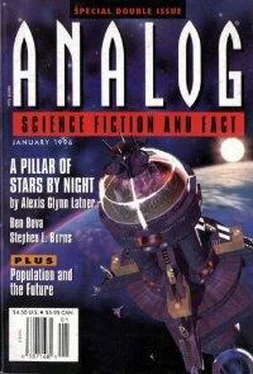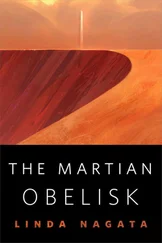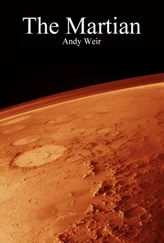G. Nordley - Martian Valkyrie
Здесь есть возможность читать онлайн «G. Nordley - Martian Valkyrie» весь текст электронной книги совершенно бесплатно (целиком полную версию без сокращений). В некоторых случаях можно слушать аудио, скачать через торрент в формате fb2 и присутствует краткое содержание. Год выпуска: 1996, Издательство: Dell Magazines, Жанр: Космическая фантастика, на английском языке. Описание произведения, (предисловие) а так же отзывы посетителей доступны на портале библиотеки ЛибКат.
- Название:Martian Valkyrie
- Автор:
- Издательство:Dell Magazines
- Жанр:
- Год:1996
- ISBN:нет данных
- Рейтинг книги:5 / 5. Голосов: 1
-
Избранное:Добавить в избранное
- Отзывы:
-
Ваша оценка:
- 100
- 1
- 2
- 3
- 4
- 5
Martian Valkyrie: краткое содержание, описание и аннотация
Предлагаем к чтению аннотацию, описание, краткое содержание или предисловие (зависит от того, что написал сам автор книги «Martian Valkyrie»). Если вы не нашли необходимую информацию о книге — напишите в комментариях, мы постараемся отыскать её.
Martian Valkyrie — читать онлайн бесплатно полную книгу (весь текст) целиком
Ниже представлен текст книги, разбитый по страницам. Система сохранения места последней прочитанной страницы, позволяет с удобством читать онлайн бесплатно книгу «Martian Valkyrie», без необходимости каждый раз заново искать на чём Вы остановились. Поставьте закладку, и сможете в любой момент перейти на страницу, на которой закончили чтение.
Интервал:
Закладка:
The Norwegians gradually passed below us and drew away. Their midcourse maneuver had put them slightly ahead for now, and my hopes for getting permission for an autonomous catch-up burn were about nil. But I was sure I could slip a few more meters per second into the next scheduled one.
Another month had passed. Mars became a small, reddish moon to our eyes, and in our telescope, we seemed to fly over its surface. The communications time lag was approaching its maximum of six and a half minutes. Soon Earth would pass sunward of us as we coasted uphill to our destination.
We watched each other, we and the Norwegians. Officially, we pretended they did not exist. Unofficially, forty men envied Per Nordli more and more, and praised our mission plan less and less. We had a few heated arguments, and a broken nose in the Leonov.
The Norwegians made no attempt to talk to us either. But time had not solved anything, and I had put off making my contingency plans too long. Our final midcourse maneuver was scheduled in two days and things would be too busy then, and too locked in concrete, to coordinate any trajectory changes with the Norwegians. I called Halvorsen.
With almost six minutes between sender and receiver, one doesn’t wait for greetings before proceeding to business. After my testy preliminaries, I asked, “Can you at least tell me what kind of parking orbit they are going to try to achieve? We may be able to match inclinations. Over.”
Hopefully time and a little conciliation would put the conversation on a professional basis. We needed to make plans and the communications round trip was eating up time.
His eyebrows went up and a hint of a smile crossed his face. “Commander Lopez, I provided all of this data to Dr. Worthing and your mission control two months ago. Per and Ingrid are not going into a parking orbit. They plan to proceed directly to the surface. Parking orbit is a backup. Over.”
“What?” With Halvorsen, I should not have made assumptions. He stared out of the screen at me as, somewhere deep inside me, a sense of doom started to form. I was dealing with a different kind of human being, a leader who dealt with the laws of nature directly, instead of through intermediaries. Everyone’s mission plans went to parking orbit—everyone’s except Halvorsen’s.
History assaulted my mind when I saw his craggy, ancient face. Some recent—Halvorsen’s own incredible lunar south pole mission twenty years ago. But in the mists there were Amundsen, Nansen, and, of course, Leif Eriksson. As to why Dr. Worthing had not told us? He presumably feared what I might do to make up the time. He feared right.
“Did you receive?” Halvorsen asked. “You are silent too long.”
I had forgotten to say “over” and wasted six minutes. I shrugged my shoulders, and struggled for internal peace. I was not an inexperienced astronaut; I led explorations of several major lunar features and was second in command on the mission to the asteroid Eros, the trial for this mission. I’d had all the resources of the United Nations behind me. There was no reason for me to be flustered. But I sat there in front of the screen pickup open-mouthed.
“Well,” he continued, “the whole thing I will run through while you figure out what you say. Ja, ten years ago I left the ISA Mars conference. We have already discussed why. Then I talked to our prime minister who nod-ded his head to some things and shook it to others. Our space program is a matter of national pride, ja, but it has to be a not-so-expensive program.
“So, officially, I had the go-ahead to do a small Moon base. The Italians have one, the Tysker, the Nederlanders, even the Svensker!” Halvorsen scowled at this, and it was my turn to smile. If you look at the Scandinavian peninsula, you see not golden fields of Nordic brotherhood, but a line of tall mountains down its middle.
“So our little single-stage-to-orbit Norgedraken flew ten missions and twice docked four payloads to big composite disks. Then we sent them both toward the Moon. You remember?”
Very well, I remembered. It had been a fiasco. Both their seven-million-kroner base modules failed to make nominal Lunar Orbit Insertion burns and had whipped by the Moon out into interplanetary space. It had been such a loss to the minuscule Norwegian space program that observers thought that it would pretty much end the thing. But their parliamentary committee had met in closed session and voted more of their oil money for a second attempt.
The old man’s face broke into the grin I would expect to see on the face of Satan himself when he acquires Halvorsen’s soul. “Well, our real plan that was not, nei, nor did anyone notice where the so-called Moon base modules went after they picked up a couple of kilometers per second rounding the Moon.” Halvorsen raised his eyebrows and I got a sinking feeling as I remembered that the date of the Norwegian Moon base “failure” was within a month of our own Mars supply staging mission.
Halvorsen continued. “Everyone said Halvorsen screwed up. Ikke sandt? Not so? Well, we let them think that. Now I will put on the animation of our mission.” Halvorsen’s face was replaced by a cartoon of the “Moon” mission as he narrated. “The big disk was not just a docking structure, it was an aerobraking heat shield, which is how one should go to Mars. I say this to you ten years ago, but all your big rocket companies and everyone who wants to work for one someday say, ‘no, no, too risky.’ So you then buy lots of big rockets, ja? Well—”
As the trajectory lines on the animation bent past Luna toward Mars, I forgot myself. I yelled at him despite the fact he hadn’t finished talking. “Halvorsen, damn you, we only bought five ARIES heavy-lift launch vehicles!” He wouldn’t hear that until I was well into regretting I said it, of course.
“… Our ships have a mass ratio of seven and an exhaust velocity of three kilometers per second. That gets us to Mars fast, easy. We do some phasing pair burns to make sure we hit things right. Then we go right into the Martian atmosphere like the American Apollo returned to Earth, except we use negative lift to hold us down if there is not so much atmosphere where we come by. So, if air is thin, we skim the mountain tops and get at least capture, then hit our target on second pass, but if average, or more dense, we can land first pass. No matter. After we reach terminal velocity, we use rockets for the last half kilometer per second. The computers they need for this simple stuff weigh only a hundred grams now, so we take five each.
“The supply ships were the trial run for the crew ship. They left two tiny satellites in egg-shaped half-Mars-day orbit with their high points at that latitude, good for communications relay and reconnaissance. Then they left four full fuel tanks in low orbit and landed on Mars to make more fuel for our return from carbon dioxide with their solar cells. This is not very efficient, but, with two years to do it, the ground base tanks are now full. This is simple, ja? Now Ingrid and Per will go to the bottom of Chryse, as you do, ikke sandt? But they will go straight down. Now—”
My outburst about the heavy lift vehicles arrived then; I could hear my voice in the background. He frowned, then grinned. “ Ja, well those big companies with the jobs, what did they build next?” He shook his head in exaggerated sympathy. “Back to Ingrid and Per. They can get themselves there and back with plenty of redundancies and no need for you to be concerned. Our ships we can park in Earth orbit and use again in two years. It is your super-complicated one-time mission about which you need be concerned. Over.”
Читать дальшеИнтервал:
Закладка:
Похожие книги на «Martian Valkyrie»
Представляем Вашему вниманию похожие книги на «Martian Valkyrie» списком для выбора. Мы отобрали схожую по названию и смыслу литературу в надежде предоставить читателям больше вариантов отыскать новые, интересные, ещё непрочитанные произведения.
Обсуждение, отзывы о книге «Martian Valkyrie» и просто собственные мнения читателей. Оставьте ваши комментарии, напишите, что Вы думаете о произведении, его смысле или главных героях. Укажите что конкретно понравилось, а что нет, и почему Вы так считаете.












